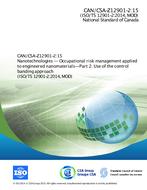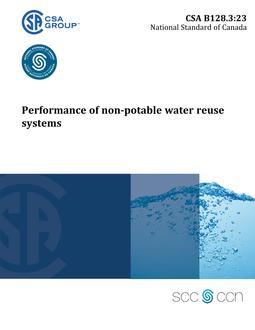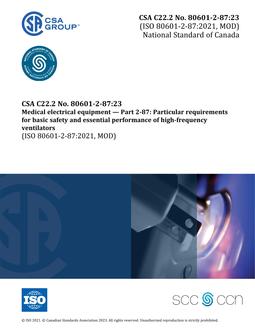
CSA Z12901-2:15 (R2020)
Click here to purchase
Preface:
This is the first edition of CAN/CSA-Z12901-2, Nanotechnologies — Occupational risk management applied to engineered nanomaterials—Part 2: Use of the control banding approach, which is an adoption, with Canadian deviations, of the identically titled ISO (International Organization for Standardization) Technical Specification 12901-2 (first edition, 2014-01-15).
For brevity, this Standard will be referred to as “CAN/CSA-Z12901-2” throughout.
This document contains revisions and additional guidance to reflect Canadian practices and safety considerations. This Standard is one of a series of Standards on nanotechnologies resulting from international and Canadian contributions to the continued activity of ISO/TC 229, the ISO Technical Committee on nanotechnologies.
Scope:
The purpose of this part of ISO/TS 12901 is to describe the use of a control banding approach for controlling the risks associated with occupational exposures to nano-objects, and their aggregates and agglomerates greater than 100 nm (NOAA), even if knowledge regarding their toxicity and quantitative exposure estimations is limited or lacking.
The ultimate purpose of control banding is to control exposure in order to prevent any possible adverse effects on workers’ health. The control banding tool described here is specifically designed for inhalation control. Some guidance for skin and eye protection is given in ISO/TS 12901-1.
This part of ISO/TS 12901 is focused on intentionally produced NOAA that consist of nano-objects such as nanoparticles, nanopowders, nanofibres, nanotubes, nanowires, as well as of aggregates and agglomerates of the same. As used in this part of ISO/TS 12901, the term “NOAA” applies to such components, whether in their original form or incorporated in materials or preparations from which they could be released during their lifecycle. However, as for many other industrial processes, nanotechnological processes can generate by-products in the form of unintentionally produced NOAA which might be linked to health and safety issues that need to be addressed as well.
This part of ISO/TS 12901 is intended to help businesses and others, including research organizations engaged in the manufacturing, processing or handling of NOAA, by providing an easy-to-understand, pragmatic approach for the control of occupational exposures.
Control banding applies to issues related to occupational health in the development, manufacturing and use of NOAA under normal or reasonably predictable conditions, including maintenance and cleaning operations but excluding incidental or accidental situations.
Control banding is not intended to apply to the fields of safety management, environment or transportation; it is considered as only one part of a comprehensive risk management process.
Materials of biological origin are outside the scope of this part of ISO/TS 12901.
Product Details
- Edition:
- 1st
- Published:
- 05/01/2015
- ISBN(s):
- 9781771398978
- Number of Pages:
- 63
- File Size:
- 1 file , 3.5 MB
- Product Code(s):
- 2423608, 2423834, 2423608, 2423608


